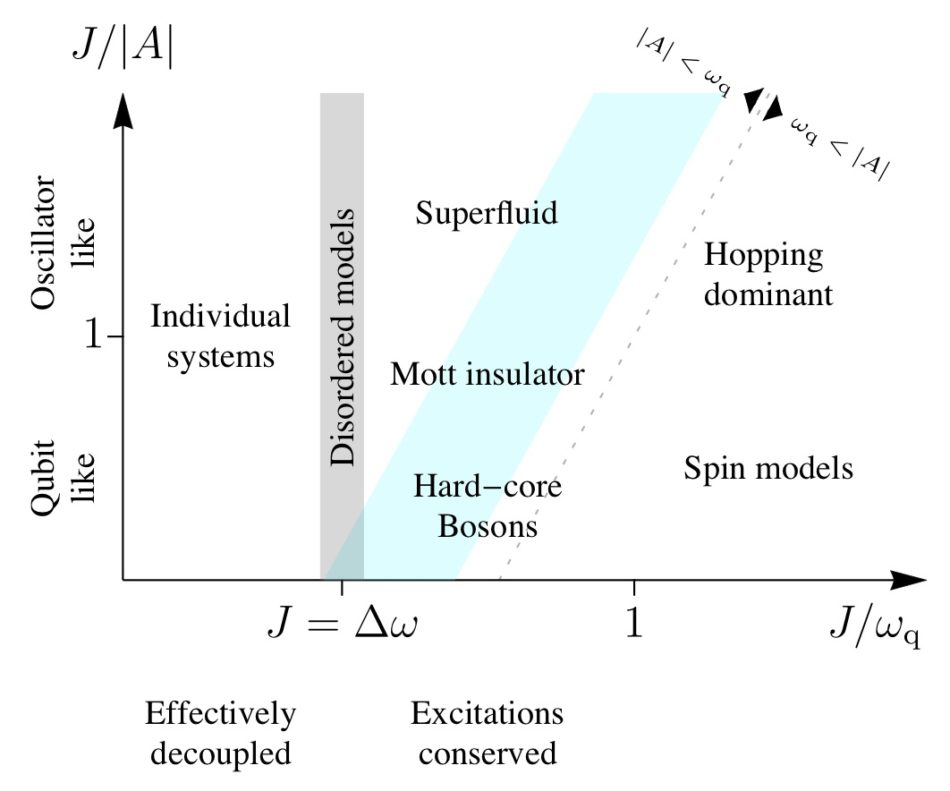In a collaboration with MIT we develop a roadmap for exploring new physics in arrays of superconducting qubits.
Yariv Yanay, Jochen Braumüller, Simon Gustavsson, William D. Oliver, Charles Tahan
(Submitted on 2 Oct 2019)
The pursuit of superconducting-based quantum computers has advanced the fabrication of and experimentation with custom lattices of qubits and resonators. Here, we describe a roadmap to use present experimental capabilities to simulate an interacting many-body system of bosons and measure quantities that are exponentially difficult to calculate numerically. We focus on the two-dimensional hard-core Bose-Hubbard model implemented as an array of floating transmon qubits. We describe a control scheme for such a lattice that can perform individual qubit readout and show how the scheme enables the preparation of a highly-excited many-body state, in contrast with atomic implementations restricted to the ground state or thermal equilibrium. We discuss what observables could be accessed and how they could be used to better understand the properties of many-body systems, including the observation of the transition of eigenstate entanglement entropy scaling from area law behavior to volume law behavior

